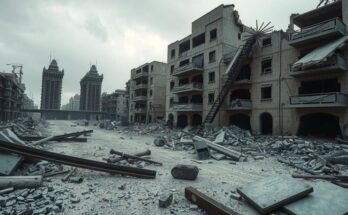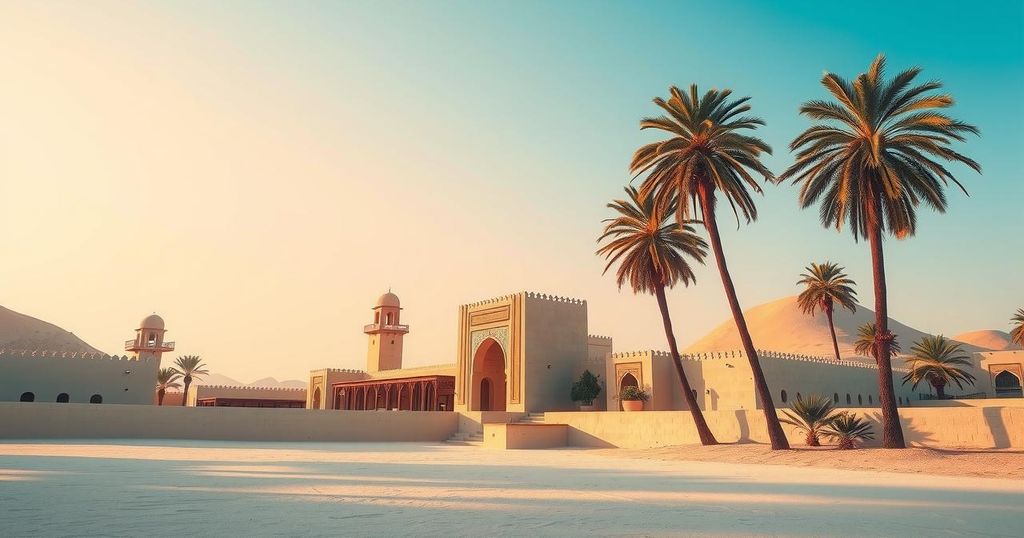This article explores the social and political dynamics in the Sayida Zaynab shrine and Douma, highlighting the tense coexistence of Shia and Sunni communities in post-Assad Syria. Key figures like Abu Omar and local residents reflect on the balance of fear and hope in their shifting neighborhood and the broader implications for rebuilding a fractured nation.
The Sayida Zaynab shrine, a revered site for Shia Muslims located near Damascus, is now under new management. Abu Omar, a former fighter for Hayat Tahrir al-Sham and the current head of security, oversees security with the help of Sunni gunmen, despite the lingering presence of old regime supporters. The shrine symbolizes both fear and hope in the region, which has been marked by ongoing sectarian tensions and the remnants of civil unrest.
Abu Omar stressed the importance of protection for the shrine and nearby Shia communities from any threats while acknowledging the past sectarian violence that has plagued Syria. His approach to security reflects a commitment to safeguard faith and lives, emphasizing that they actively pursue remnants of the past regime, to ensure continued peace in the area.
Meanwhile, the perspectives of local Shia residents highlight a complicated atmosphere of hope and trepidation. Deeb Krayem, a Shia manager at the shrine, noted the change in regime leaders, yet expressed concerns over personal security. The dialogue among the mourners at a graveyard reveals deep community divides, with lingering grievances from past conflicts.
A range of fears permeates the old guard linked to the Assad regime, as exemplified by anxious sentiments from an Alawite civil servant. While she expressed loyalty to the Assad administration as a protector of minorities, she remains wary of reprisals from Sunni extremists, reflecting the broader anxieties that define community relations in post-Assad Syria.
Moving to Douma, tensions are palpable between returning revolutionaries and those who remained under Assad’s control. Following years of siege, many residents now grapple with ruined infrastructure and increasing rents. Despite the challenges of returning home after years of conflict, hope persists for a better future among returnees, many placing faith in relationships established during exile.
Commanders like Abu Hashem Abdelrahman Taha maintain optimism for Douma’s future, despite the ongoing struggle to integrate returnees and address the remnants of the previous regime. As the landscape of governance shifts, the sense of distrust lingers, particularly towards those who remained loyal to Assad, highlighting the complexities of coexisting amid historical grievances.
Ultimately, while challenges abound in Syria, the end of the Assad regime signifies a critical shift towards the possibility of rebuilding and reconciliation. The brave voices of the new leadership signal a vision for a state that respects all communities, free from the oppressive tactics that defined past governance. Thus, amid fear and hope, there lies a collective aspiration for lasting peace in a fractured nation.
In summary, the evolving dynamics at the Sayida Zaynab shrine and in Douma illustrate the deep-seated fears and hopes among Syrian citizens in the wake of the Assad regime’s decline. Abu Omar’s leadership reflects a determination to ensure peace for the Shia community amid lingering tensions, while residents grapple with a complex transition marked by distrust and historical grievances. As Syrians navigate their future, the possibility of rebuilding a nation that honors all its inhabitants remains a beacon of hope in the midst of fear.
Original Source: tcf.org




